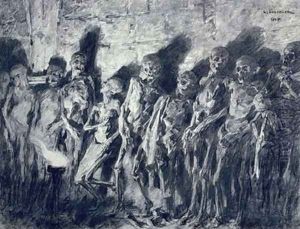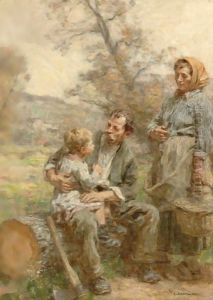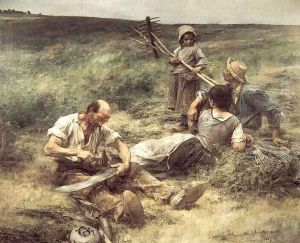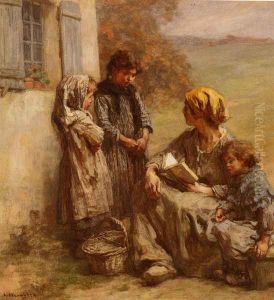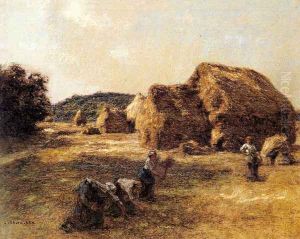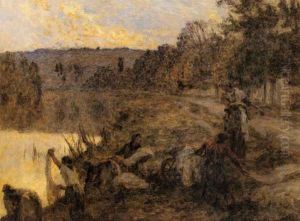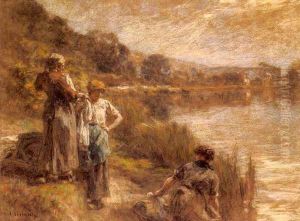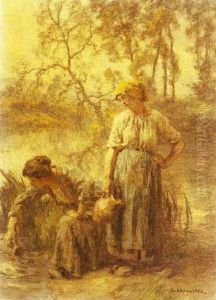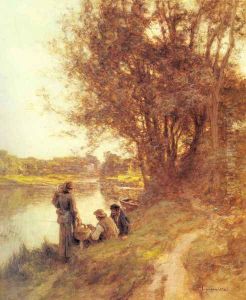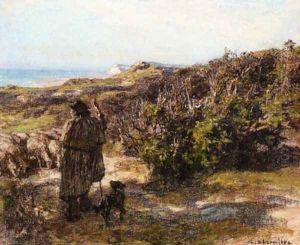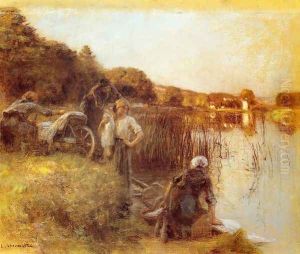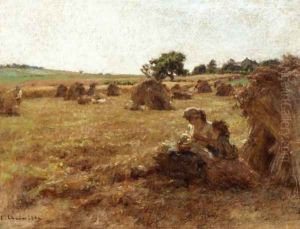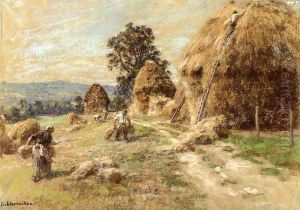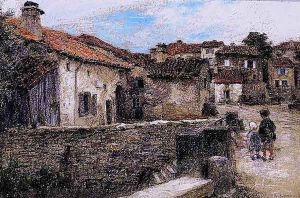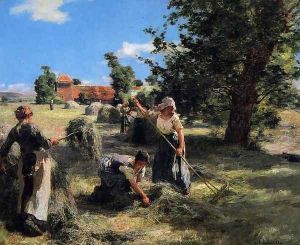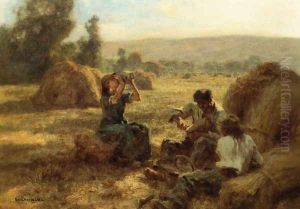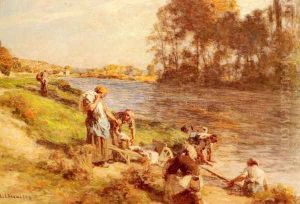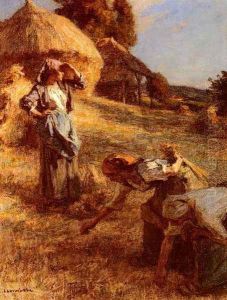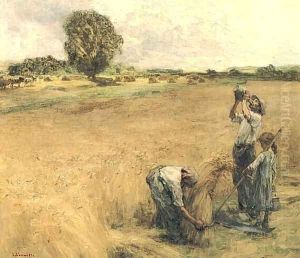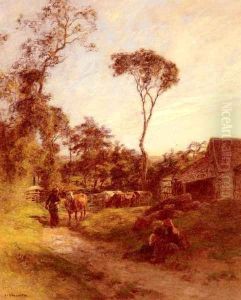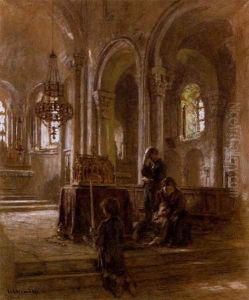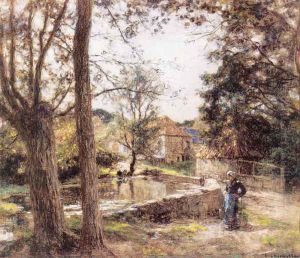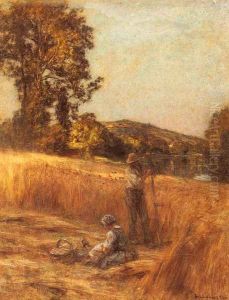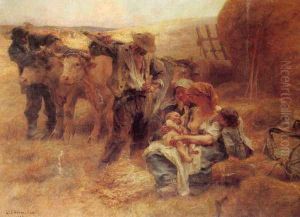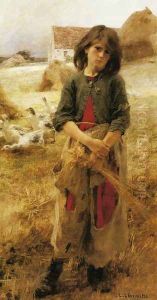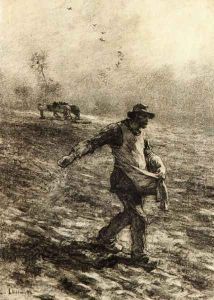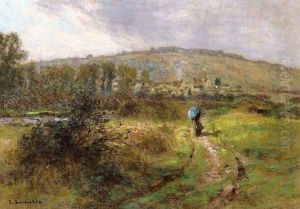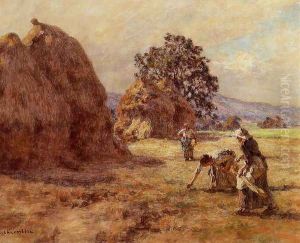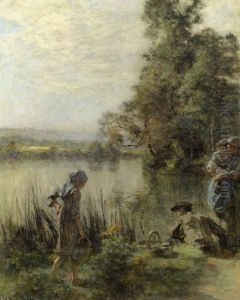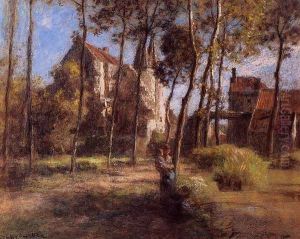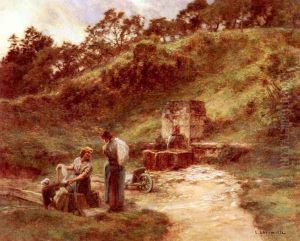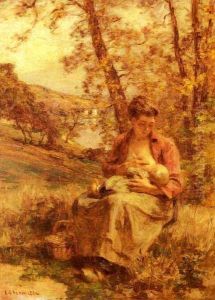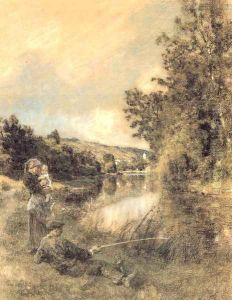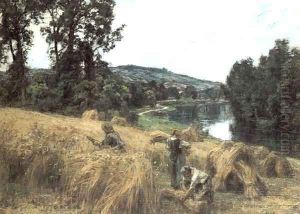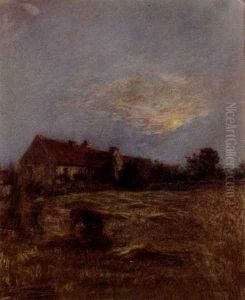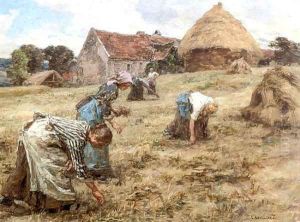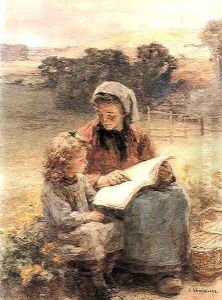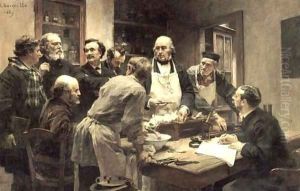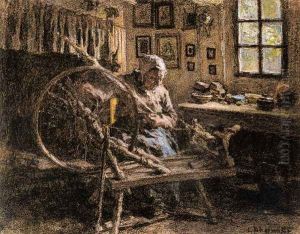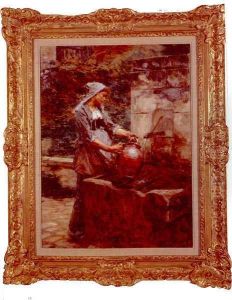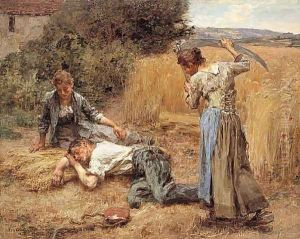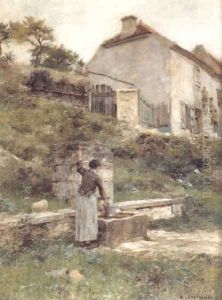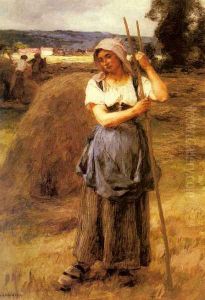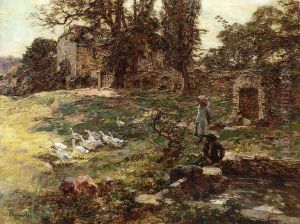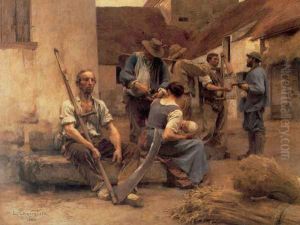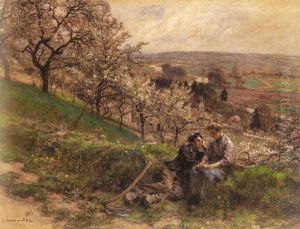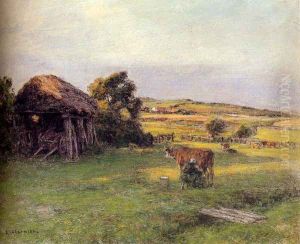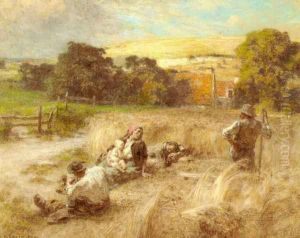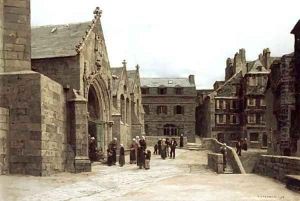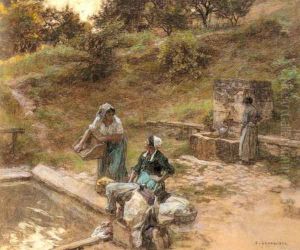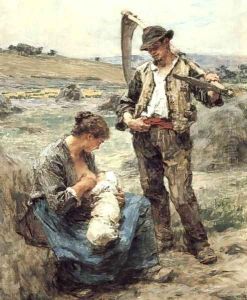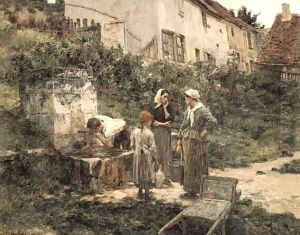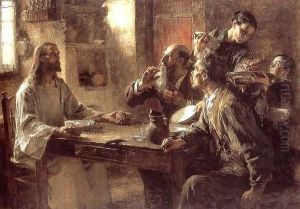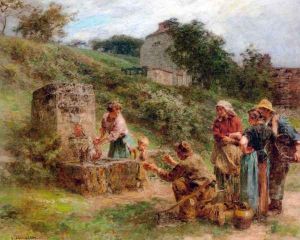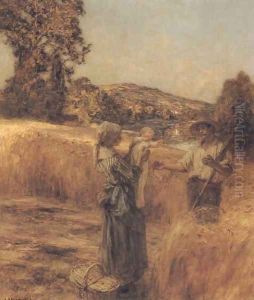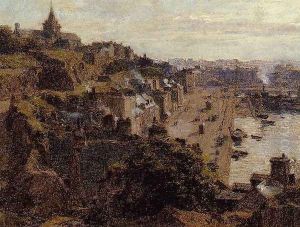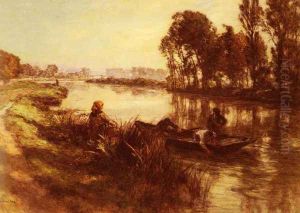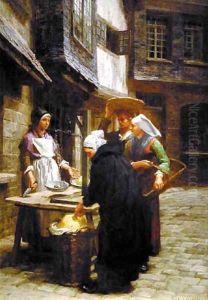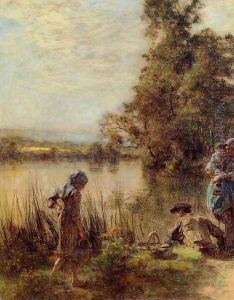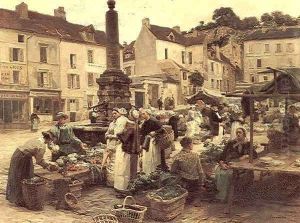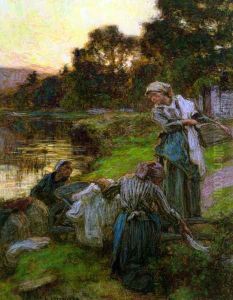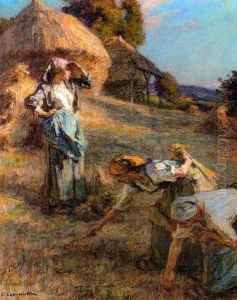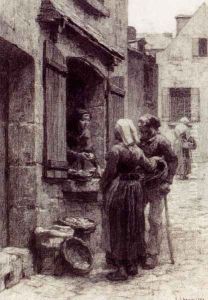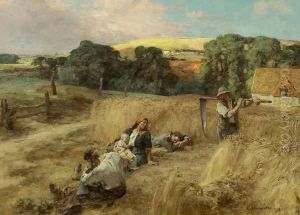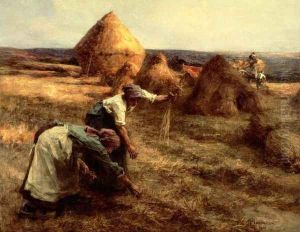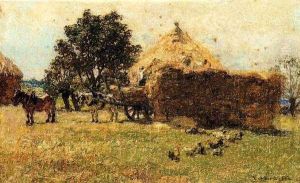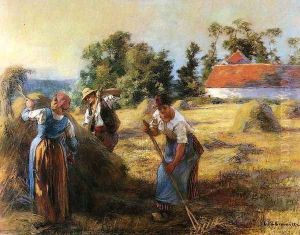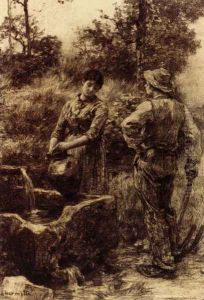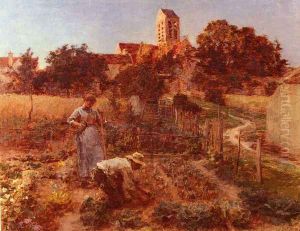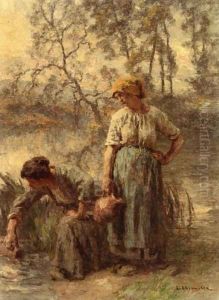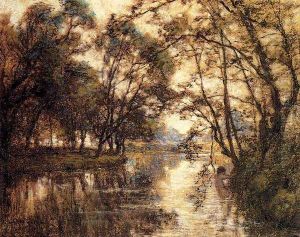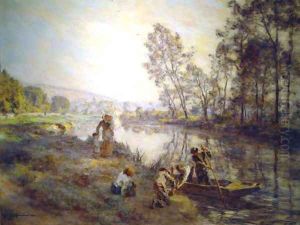Leon Augustin Lhermitte Paintings
Leon Augustin Lhermitte, born on July 31, 1844, in Mont-Saint-Père, France, was a pivotal figure in the naturalist movement, celebrated for his masterful depictions of rural life and landscapes. His upbringing in the countryside deeply influenced his artistic focus, leading him to capture the essence of peasant life with an extraordinary sense of realism and empathy. Lhermitte's technical prowess was evident in both his paintings and charcoal drawings, a medium in which he was particularly esteemed for his skillful use of light and shadow to evoke mood and atmosphere. Lhermitte's artistic journey began at the École Impériale de Dessin in Paris, studying under Horace Lecoq de Boisbaudran, a pedagogue renowned for his innovative teaching methods that emphasized memory and observation. This training honed Lhermitte's ability to observe and capture the nuances of daily life, a skill that became a hallmark of his work. Throughout the 1870s and 1880s, he gained recognition for his vivid depictions of peasant life, earning accolades at the Paris Salon and international exhibitions. His painting 'The Harvesters’ Rest' (1882) is among his most celebrated works, showcasing his ability to convey the dignity and toil of rural laborers with profound humanity. Despite the rise of Impressionism, Lhermitte remained committed to his naturalist roots, focusing on the accurate portrayal of rural life rather than experimenting with color and light as his contemporaries did. However, his work was not without innovation; his technique, particularly in his use of charcoal, influenced many artists and elevated the medium to new heights. Lhermitte's contributions were recognized by the French government, which awarded him the Legion of Honor in 1884. He was also a founding member of the Société Nationale des Beaux-Arts in 1890, an institution that played a significant role in promoting contemporary art in France. Leon Augustin Lhermitte's legacy is that of a compassionate observer of the human condition, whose works continue to resonate for their emotional depth and technical mastery. He passed away on July 27, 1925, in Paris, leaving behind a body of work that remains influential in the fields of naturalism and rural genre painting. His dedication to portraying the lives of peasants with dignity and realism has established him as a significant figure in the history of French art.
